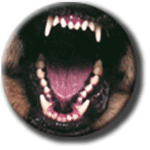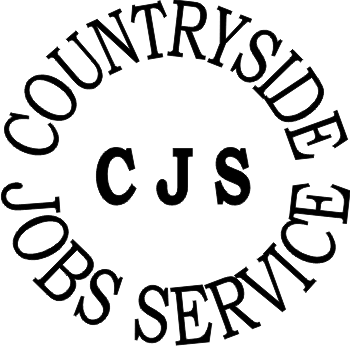Naturenet: Dogs and the Law
Dogs
and the law
Note: this page - like all others on Naturenet - concerns the law in England
and Wales. We cannot help you if you want to know about dog laws anywhere else,
especially in the United States.

There is no law specifying that dogs must be kept on a lead on a right of way or other public place, but local authorities can make an order under section 27 of the Road Traffic Act 1988 to introduce this as a requirement on designated highways. Additionally, the dog must be allowed to walk only along the line of a public right of way. An act of trespass may be committed against the land owner if it wanders too far away from the official route, but this would not be something the local authority would be likely to take action against.
When
on any enclosed land with sheep all dogs must be on a lead or 'under close
control'. If you allow your dog to worry livestock you can be prosecuted
and fined, ordered to pay compensation and even have the dog destroyed. Now
who's worried? Worrying livestock means attacking or chasing any farm animal
or poultry - there does not have to be any contact. The landowner is not
liable to compensate the dog’s owner in such circumstances.
DEFRA
say "The main countryside rule is - DOGS
MUST NEVER WORRY LIVESTOCK. Under
the Dogs (Protection of Livestock) Act 1953 the owner, and anyone else
under whose control the dog is at the time, will be guilty of an offence
if it worries livestock on agricultural land. The dog must have been
attacking or chasing livestock in such a way that it could reasonably
be expected to cause injury or suffering or, in the case of females,
abortion or the loss or diminution of their produce. An offence is not
committed if at the time of the worrying the livestock were trespassing,
the dog belonged to the owner of the land on which the trespassing livestock
were and the person in charge of the dog did not cause the dog to attack
the livestock. The definition of 'livestock' includes cattle, sheep,
goats, swine, horses and poultry. Game birds are not included."
Section 1 of the Dogs (Protection of Livestock) Act 1953 makes it an offence for a dog to be at large, ‘that is to say not on a lead or otherwise under close control’, in a field or enclosure containing sheep. It is also an offence for dogs to attack or chase livestock, and farmers are permitted to shoot dogs that are worrying, or are about to worry, farm animals. This is outlined in the Animals Act 1971 section 9, which also states that the farmer is not liable to compensate the dog’s owner in such circumstances. Any dog which is not a working dog can be regarded as worrying
livestock merely by being off lead and not under close control in a field
or enclosure where there are sheep. A landowner could shoot such a dog, if
it can be proved that the action was necessary to protect livestock and that
it was reported to the police within 48 hours. The dog's owner can then be
subject to all the above penalties too - except being shot, of course. So be
careful!
On a right of way your dog does not have to be on a lead but it does have
to be 'under close control'. This phrase is not defined but pretty much means
that if you are in a field with animals or poultry and your dog will not always
come, straight away, when called even when he's chasing things, and then stay
there, he could be at risk of being seen to worry animals. So if there is any
chance he might go off then the lead is the best option until you are out of
the field with livestock in it.
If your dog or indeed any animal under your control injures a person or animal
or damages property, the owner or person responsible may be liable for damages.
This would be a civil claim and not necessarily a criminal offence.
Dog owners have a duty to ensure that their animal does not threaten or harm a member of the public. The Town Police Clauses Act of 1847 made it an offence for ‘any unmuzzled ferocious dog’ to be at large in any street (this term is defined as including any ‘public passage’, and therefore covers all rights of way). Restrictions can be placed on dog ownership under the Dogs Act 1871 if the animal is found to be out of control. A magistrates’ court is empowered to make an order for a dog to be destroyed, and, by means of the Dangerous Dogs Act 1989 can also ‘make an order disqualifying the owner from having custody of a dog for such period as is specified in the order’. Further to the Dangerous Dogs Act 1991, section 3, such an order can be made regardless of whether or not the dog has actually injured someone. The court can also specify what measures should be taken to keep a dog under control. Extracts below are from the Dangerous Dogs Act unless otherwise indicated.
1. The following dogs, and also cross-bred pit-bulls, are dangerous dogs under
the meaning of the Act:
- Pit Bull Terrier
- Japanese Tosa
- Dogo Argentino
- Fila Braziliero
It is illegal to possess such a dog without a certificate
of exemption, which is granted once the dog is neutered, insured, and has
a transponder implant. These dogs cannot be "in a public place without
being muzzled and ... being securely kept on a lead by a person who is not
less than 16 years old."
A public place even includes locked inside a car which is itself in a public
place.
2. If a dog is dangerously out of control in a public place, or a private
place where it is not permitted to be, the owner; and if different, the person
for the time being in charge of the dog, is guilty of an offence.
"A dog shall be regarded as dangerously out of control
on any occasion on which there are grounds for reasonable apprehension that
it will injure any person, whether or not it actually does so."
In the case of Briscoe -v- Shattock QBD 12 October 1998
it was held that a dog could be considered "dangerous" and "not kept under proper
control" within the meaning of Section 2 of the Dogs Act 1871, even if
the only danger shown was to other dogs, and not to humans. Being dangerous
reflected the dog's disposition not his acts.
This applies to any dog, of any breed. The quote from the Act above means
that any dog which is a bit lively might commit an offence if not kept under
control - this could be your dog too! For example, we understand a farmer was
prosecuted and fined under this section of the Act when his aggressive dogs
intimidated walkers on a public footpath, even though the dogs were on private
land and behind a fence (sorry, no reference to this case).
Dangerous Dogs (Amendment) Act 1997
The Control of Dogs Order 1930 (as amended) requires that every dog in a public
place must wear a collar with the owner's name and address on it. The exemptions
are when the dog is being used for sporting purposes, driving or tending
livestock, destruction of 'vermin' or is one of a pack of hounds.
 The Environmental Protection Act 1990 requires the finder of any stray dog
to return it to its owner or take it to the nearest police station. If the
finder wants to keep the dog, they do not have to leave it at the police
station. The Act makes it clear that local authorities should deal with strays
and with cleaning dog faeces from the street. All local authorities must
have at least one dog warden or officer. Police officers may catch and transport
strays to a police station, but are not obliged to do so. However they are
obliged to handle any stray dog brought to the police station itself.
The Environmental Protection Act 1990 requires the finder of any stray dog
to return it to its owner or take it to the nearest police station. If the
finder wants to keep the dog, they do not have to leave it at the police
station. The Act makes it clear that local authorities should deal with strays
and with cleaning dog faeces from the street. All local authorities must
have at least one dog warden or officer. Police officers may catch and transport
strays to a police station, but are not obliged to do so. However they are
obliged to handle any stray dog brought to the police station itself.
Section
68 of the Clean Neighbourhoods and Environment Act 2005 includes new
provisions for stray dogs but these have not yet come into force and show no
sign of doing so.
Under the Guard Dogs Act 1975, the use of a guard dog at any premises except
agricultural land or dwelling houses is not permitted unless a handler is
present on the premises and controls the dog at all times, and warning notices
are displayed at the entrances. If the handler is not present the dog must
be secured. Section 1(3) of the Guard Dogs Act 1975 states that ‘a person shall not use or permit the use of a guard dog at any premises unless a notice containing a warning that a guard dog is present is clearly exhibited at each entrance to the premises’.
 From 6 April 2006 local authorities
no longer have to rely on the creaky old byelaw system to control dogs on
public land. The problem with this old system was that making new byelaws
used to take years, if not decades, and so it was very easy for them to get
out of date, if, for example, the council opened a new park or closed part
of an old one. Section 6 of the Clean Neighbourhoods and Environment Act
2005 provided a new way of controlling dogs, allowing local authorities and
parish councils to introduce controls on dogs in certain areas without confirmation
by the Secretary of State. Councils will still be able to make new byelaws
to control dogs if they wish to do so, but only in relation to offences that
cannot be prescribed in a Dog Control Order. Existing byelaws remain in force
indefinitely, and can continue to be enforced as normal. See DEFRA Dog Fouling page for more details.
From 6 April 2006 local authorities
no longer have to rely on the creaky old byelaw system to control dogs on
public land. The problem with this old system was that making new byelaws
used to take years, if not decades, and so it was very easy for them to get
out of date, if, for example, the council opened a new park or closed part
of an old one. Section 6 of the Clean Neighbourhoods and Environment Act
2005 provided a new way of controlling dogs, allowing local authorities and
parish councils to introduce controls on dogs in certain areas without confirmation
by the Secretary of State. Councils will still be able to make new byelaws
to control dogs if they wish to do so, but only in relation to offences that
cannot be prescribed in a Dog Control Order. Existing byelaws remain in force
indefinitely, and can continue to be enforced as normal. See DEFRA Dog Fouling page for more details.
The new law repeals similar powers under The
Dogs (Fouling of Land) Act 1996, and under Sections 55 – 67 of the Clean
Neighbourhoods and Environment Act, Dog Control Orders replaced existing local authority
and parish council powers to designate land for dog control. Both types of
authority can control dogs by way of Dog Control Orders in relation to five
dog control matters, including: banning dogs from land; requiring that dog
faeces are cleared up; requiring that dogs are kept on a lead; requiring
that a dog is kept on a lead if required to do so; and, restricting the number
of dogs that can be taken onto land.
A Dog Control Order can be made in respect of any land
which is open to the air and to which the public are entitled or permitted
to have access (with or without payment). Land which is covered is treated
as land ‘open
to the air’ if it is open to the air on at least one side. Some land
is exempted, at present this includes all Forestry
Comission land and all roads
and other highways (including footpaths and brideways), but other exemptions
may be introduced.
Regulations state specifically that being unaware of
a dog’s defecation,
or not having a device or other suitable means of removing the faeces is not
a reasonable excuse for failing to comply with a dog control order.
Primary legislation can be found at the Office of Public Sector
Information Clean
Neighbourhoods and Environment Act 2005 and
guidance at DEFRA.
Note: this page concerns the law in England and Wales. Naturenet
cannot help you if you want to know about dogs anywhere else, especially in
the United States.


 The Environmental Protection Act 1990 requires the finder of any stray dog
to return it to its owner or take it to the nearest police station. If the
finder wants to keep the dog, they do not have to leave it at the police
station. The Act makes it clear that local authorities should deal with strays
and with cleaning dog faeces from the street. All local authorities must
have at least one dog warden or officer. Police officers may catch and transport
strays to a police station, but are not obliged to do so. However they are
obliged to handle any stray dog brought to the police station itself.
The Environmental Protection Act 1990 requires the finder of any stray dog
to return it to its owner or take it to the nearest police station. If the
finder wants to keep the dog, they do not have to leave it at the police
station. The Act makes it clear that local authorities should deal with strays
and with cleaning dog faeces from the street. All local authorities must
have at least one dog warden or officer. Police officers may catch and transport
strays to a police station, but are not obliged to do so. However they are
obliged to handle any stray dog brought to the police station itself. From 6 April 2006 local authorities
no longer have to rely on the creaky old byelaw system to control dogs on
public land. The problem with this old system was that making new byelaws
used to take years, if not decades, and so it was very easy for them to get
out of date, if, for example, the council opened a new park or closed part
of an old one. Section 6 of the Clean Neighbourhoods and Environment Act
2005 provided a new way of controlling dogs, allowing local authorities and
parish councils to introduce controls on dogs in certain areas without confirmation
by the Secretary of State. Councils will still be able to make new byelaws
to control dogs if they wish to do so, but only in relation to offences that
cannot be prescribed in a Dog Control Order. Existing byelaws remain in force
indefinitely, and can continue to be enforced as normal. See DEFRA Dog Fouling page for more details.
From 6 April 2006 local authorities
no longer have to rely on the creaky old byelaw system to control dogs on
public land. The problem with this old system was that making new byelaws
used to take years, if not decades, and so it was very easy for them to get
out of date, if, for example, the council opened a new park or closed part
of an old one. Section 6 of the Clean Neighbourhoods and Environment Act
2005 provided a new way of controlling dogs, allowing local authorities and
parish councils to introduce controls on dogs in certain areas without confirmation
by the Secretary of State. Councils will still be able to make new byelaws
to control dogs if they wish to do so, but only in relation to offences that
cannot be prescribed in a Dog Control Order. Existing byelaws remain in force
indefinitely, and can continue to be enforced as normal. See DEFRA Dog Fouling page for more details.